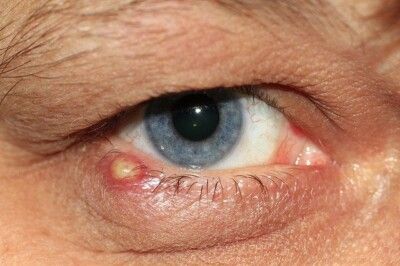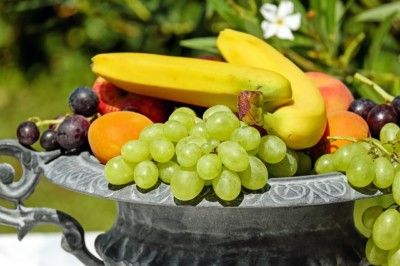Stye – causes, treatment options, home remedies
A stye, also known as a hordeolum, is usually an infection with bacteria. This inflammation can occur on both sides of the eyelid.
Causes and development of a stye
The cause of an external stye is usually an inflammation of the minor or zeis glands on the eyelid. If a stye occurs inside the eye, the cause is probably inflammation of the meibomian glands.
These inflammations are most often caused by bacteria and skin germs (staphylococcus bacteria, rarely also streptococcus), which adhere to the hands and fingers.
If these are transferred to the eye by touch, inflammation can occur. But simple dirt can also be the cause of a barleycorn.
Most often, the stye bursts open over time, allowing the pus to come out and the stye to subsequently disappear.
However, if styes occur regularly, this may indicate a disease or weak immune system.
Especially with a weakened immune system, usually caused by stress, styes occur more frequently. But also persons suffering from diabetes are more frequently affected by it.
If a stye occurs in children, parents should pay attention to the cleanliness of their children’s hands. Children often play outside and do not pay attention to what they put in their hands.
What should be taken into account?
A stye is highly contagious. To avoid infecting yourself or others, the stye on the eyelid should not be touched or expressed if possible. This could allow the bacteria to enter the eye and lead to further inflammation.
Attention should be paid to washing hands regularly and using your own towel. The use of contact lenses is not recommended during a stye, as they can further irritate the eye.
Home remedies for the treatment of stye
To treat a stye, you can also resort to various home remedies.
Red light
Exposing your stye to the dry heat of a red light lamp several times a day can help it heal faster. The heat ensures that the stye opens more quickly and the pus that has accumulated in it can drain away more quickly.
Quark compresses
Another home remedy is cold curd compresses. For feelings of tension, some curd can be spread on a linen cloth and then placed on the closed eye for about 10min.
Black tea
A bag of black tea briefly in boiling water, let cool and then squeeze well. Then simply place the tea bag on the closed affected eyelid. The tannins in black tea can promote and accelerate the healing of the barley grain.
Eyebright
Eyebright can help provide relief from eyelid inflammation or a stye. Similar to black tea, simply boil the eyebright herb, allow it to cool and apply to the eye in question.
Eyebright herb is available in the pharmacy, health food store or on the Internet.
Fenugreek seeds
Soak a linen cloth in this tea and put it on the stye. It can promote healing, as the active ingredients from fenugreek draw fluid from the tissue, thus drying out the stye.
Other treatment options
If home remedies are not enough and do not help, soothing ointments are available at the pharmacy. Get advice on this there!
If even ointments do not bring relief, then an ophthalmologist should be consulted. The doctor can make a precise diagnosis and, if necessary, prescribe antibiotic eye drops, eye ointments or antibiotics in the form of tablets.
Especially if the stye is inside the eye and spreads toward the orbit or conjunctiva, a visit to the ophthalmologist is recommended.
Barleycorn in animals
Even in animals or pets such as dogs and cats, styes can occur. Here, however, the diagnosis is usually more difficult than in humans and a veterinarian should be consulted.
This can rule out the possibility of a tumor or other disease. Usually pets are given an ointment, warm compresses or in some cases an antibiotic for the treatment of styes.
Sometimes the veterinarian opens the stye directly during treatment in the office.
Important! Do not squeeze the stye out of your pet’s eye yourself, otherwise dangerous bacteria and viruses can get into the eye.
Important vitamins for the eyes
To keep eyes healthy and strengthen the immune system, the intake of various vitamins can be beneficial. This can prevent deficiencies and diseases.
Vitamin A
If you do not take enough vitamin A, it prevents the formation of sufficient eye pigment.
Night blindness can be the result. Vitamin A is contained in its precursor beta-carotene, especially in carrots, and is therefore essential to the visual process. So not for nothing it is said that carrots are good for the eyes.
Vitamin C
Vitamin C scavenges free radicals, which are produced by ultraviolet radiation, for example, and can damage the cells in your body.
Vitamin E
Vitamin E has similar functions to vitamin C and is not only good for the eyes, but also for a strong immune system. The latter, as is well known, is important for the prevention of styes.
Lutein
Lutein protects the macula, which is also considered the point of sharpest vision in the eye. Lutein is found especially in foods such as broccoli, spinach and avocado.


